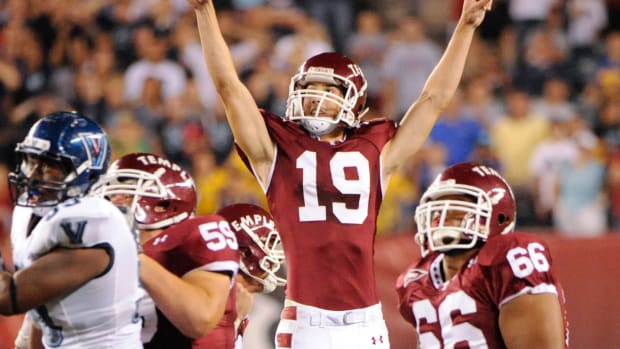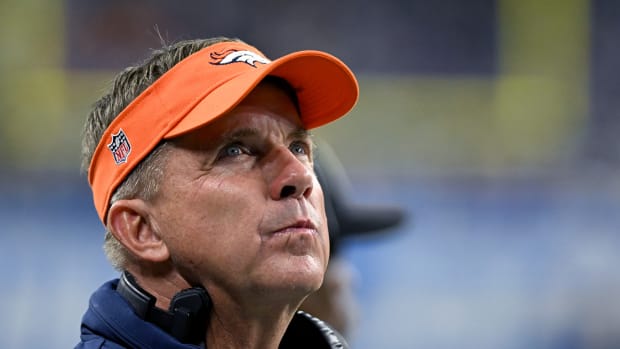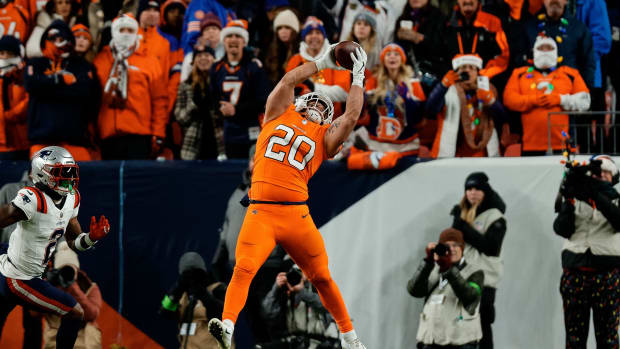Broncos are Manipulating NFL's New Practice Squad Rules to Maximum Effect
The Denver Broncos trading wide receiver Trinity Benson to the Detroit Lions was surprising to many and was a relative bombshell move. Benson played well in camp and preseason, positioning himself as a roster lock. Thus, trading him away shocked fans and analysts alike.
How can the Broncos keep only five wide receivers on the roster? The answer: the practice squad rules, carried over from the response to the pandemic last year.
Those new rules will allow teams to throw out the old rationale on building a roster and think differently. In the past, there was typically a set number of players teams were willing to roster per position and there were only slight deviations from those numbers and on rare occasions.
For example, teams typically kept six wide receivers and rarely less. Due to the new-fangled practice squad rules, those numbers from the past can be tossed out the window. Due to the pandemic, the NFL expanded the practice squad from 10 to 16 players.
Rostering 10 practice-squad players became the NFL rule in 2014, which jumped up from eight in the decade prior, and only five in 1993. This growth is important to consider.
16 players make up for nearly one-third of a team’s 53-man roster. The other additional rules make it even easier to keep performing players on the squad so 'calling them up' has taken on a new meaning.
Traditionally, one of the downside risks to keeping a valuable player on the practice squad is that they're fair game for outside teams to sign. Post-pandemic, teams can 'protect' four players on the practice squad from getting poached by other teams.
Six of the spots can be players with any amount of NFL experience. Gone are the days of having only inexperienced rookies and first-year players on the practice squad in need of development.
Another added benefit is that teams can promote two players to the active roster on gameday and send them back down to the practice squad without being subjected to waivers. These rules allow the Broncos to move pieces around more frequently and construct the roster accordingly and in ways unheard of before.
These rules are most likely here to stay. However, if they go back to the pre-pandemic Collective Bargaining Agreement (CBA), the changes are minimal in 2022. Those changes are: the practice squad would reduce to 14 players, only four players can have any amount of experience, and the poaching of players by other teams can resume.
What it Means for Broncos in 2021
Denver can leverage the new practice-squad rules to experiment and change things around to help its special teams. Let’s face it, the Broncos' special teams needs all the help it can get.
Denver has a pretty good returner in Diontae Spencer (ranked second in NFL last season in punt return average) and a good kicker in Brandon McManus. However, the Broncos' coverage teams are awful.
How does Denver get better at covering punts and kickoffs? By finding players who can run, hold their lanes, pursue well, and make tackles. What better place to start than at linebacker and safety?
RELATED: Broncos Final Roster Cuts Tracker (Real-Time Updates)
This is why the Broncos may choose to only keep five wide receivers on the 53-man roster over the more traditional six or, or even seven. Benson, although a promising receiver, could not grab hold of a special teams gig, even though the team gave him every opportunity.
The Broncos are fortunate to have four very good wide receivers at the top of the depth chart, making the experimentation with that position optimal. The fifth player, Spencer, is a designated returner who will see limited snaps on offense anyway but can be used by Pat Shurmur when needed.
By rostering five wideouts, the Broncos can add an inside linebacker and safety for depth and special teams.
This appears to be GM George Paton's thought process in the moment. The Broncos are robbing from the offense to invest in better third-phase and defensive depth. After trading Benson, Denver acquired linebacker Jonas Griffith from San Francisco, who is a good special teams guy.
Also, it looks like Denver will keep five safeties. Jamar Johnson and P.J. Locke both played often on third-phase coverage units in the preseason. The beauty of the Broncos' philosophy is that the team will be relatively protected while having the freedom to experiment with the practice squad rules.
The team can keep two or even three wide receivers on the practice squad and call them up when needed at a moment's notice. The Broncos will need to be careful because a player can only be called up from the practice squad to the gameday roster twice, so a rotation of two receivers would give the team four weeks of flexibility in a 17-game season.
It may be considered a break from the norm and there is risk in deviating from conventional thought, but the reward might just create something new and effective.
The deadline to whittle the roster down to the final 53 players is rapidly approaching on Tuesday, August 31 by 2 pm MDT.
Follow Thomas on Twitter @ThomasHallNFL.
Follow Mile High Huddle on Twitter and Facebook.
Subscribe to Mile High Huddle on YouTube for daily Broncos live-stream podcasts!




